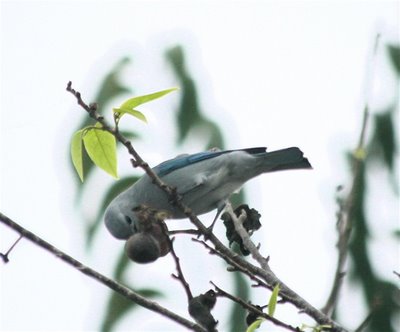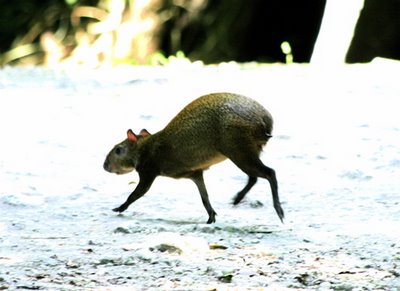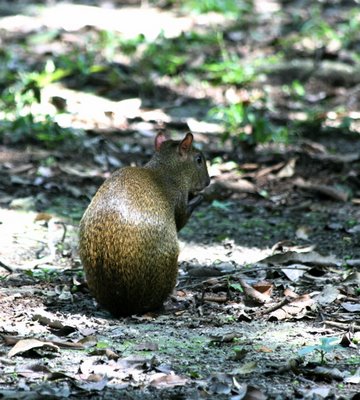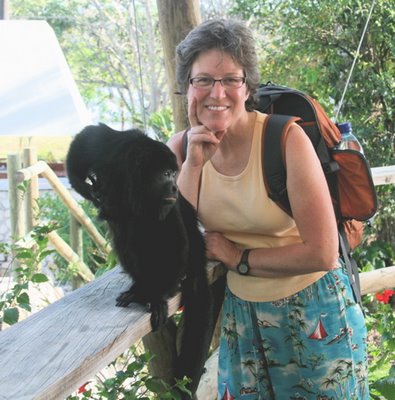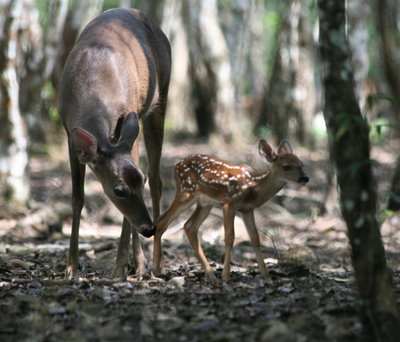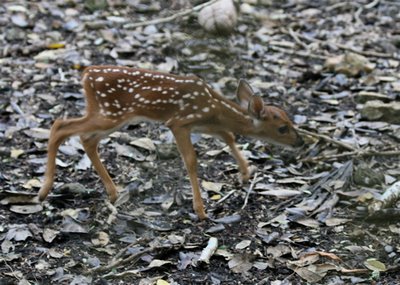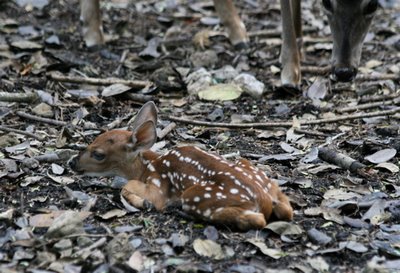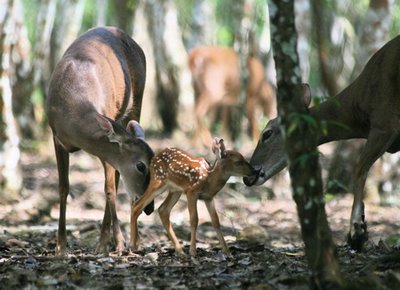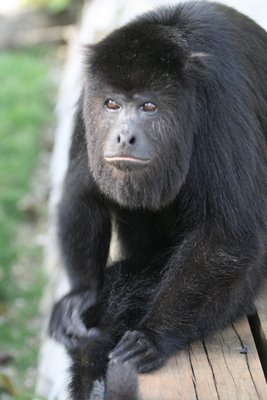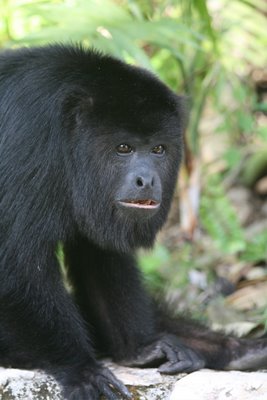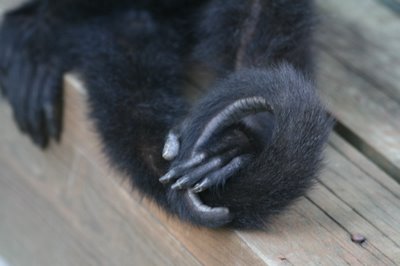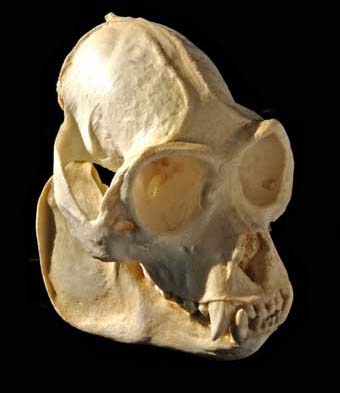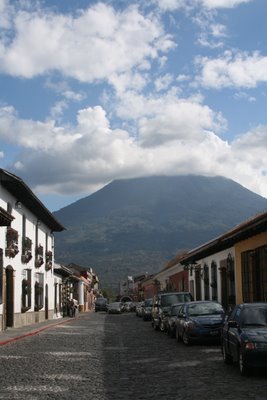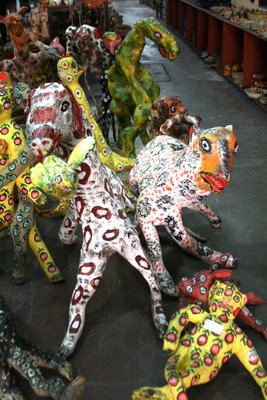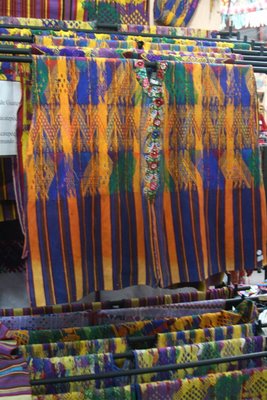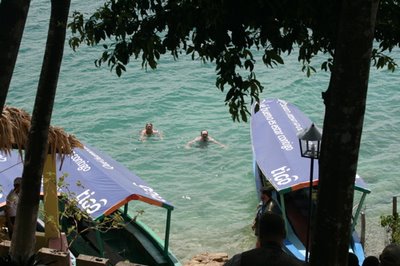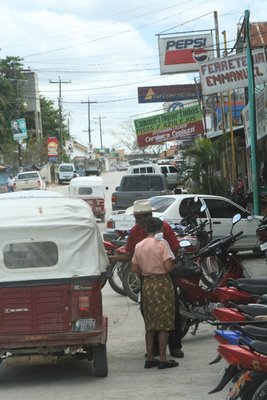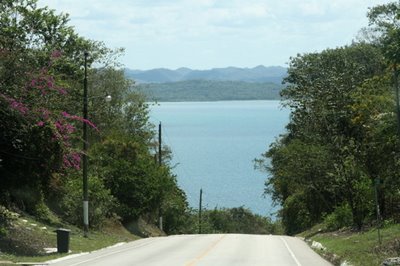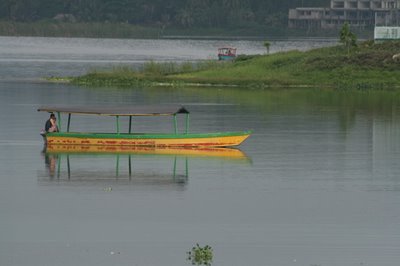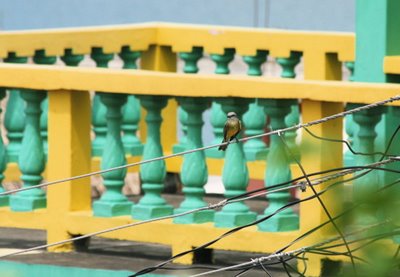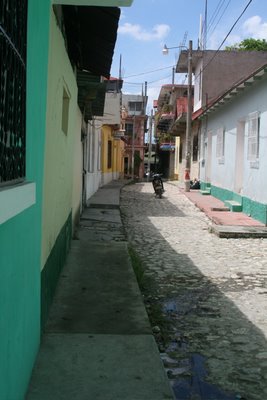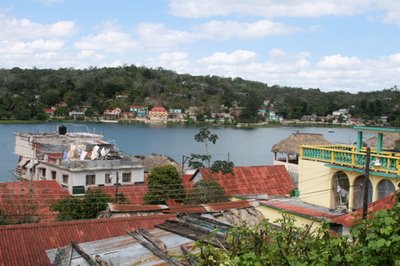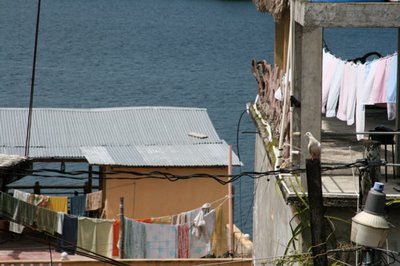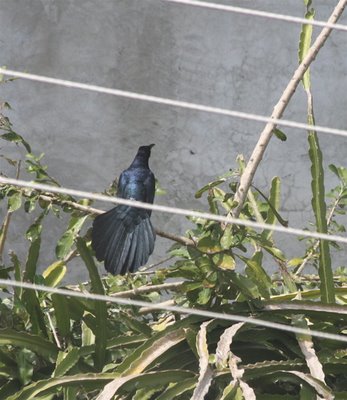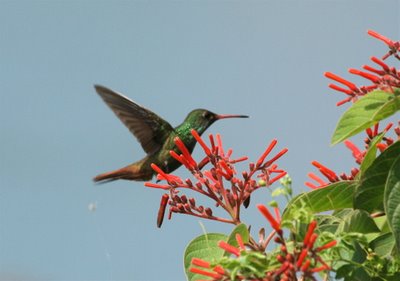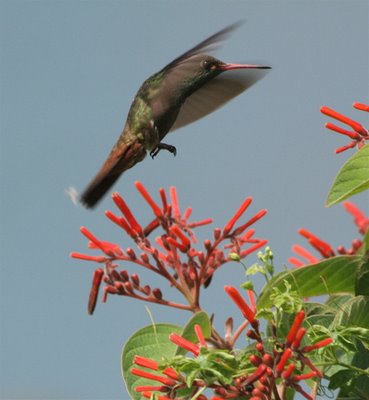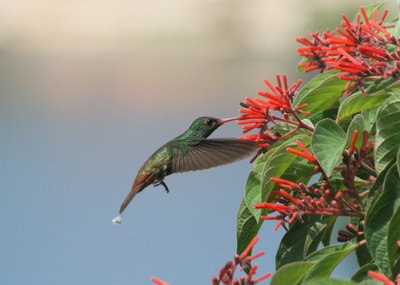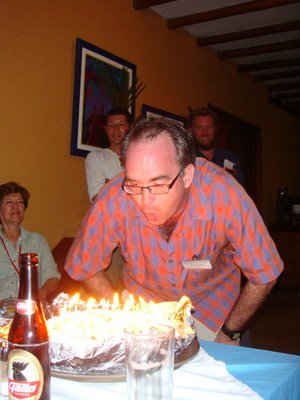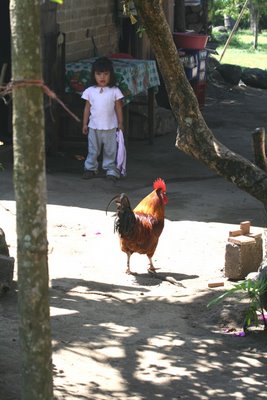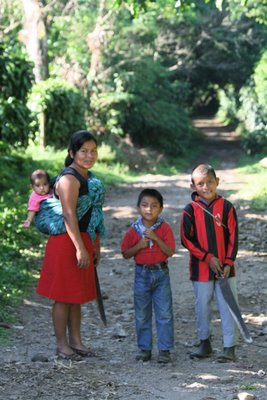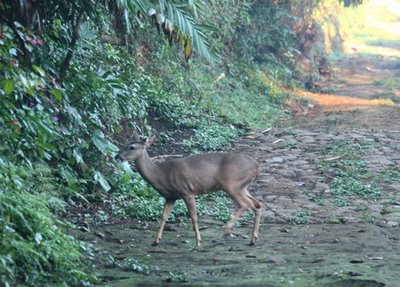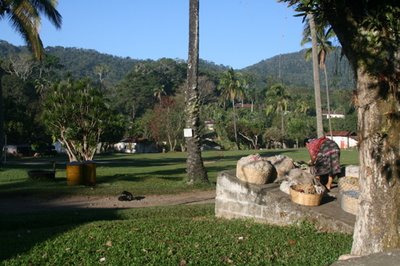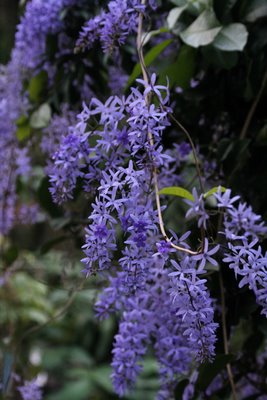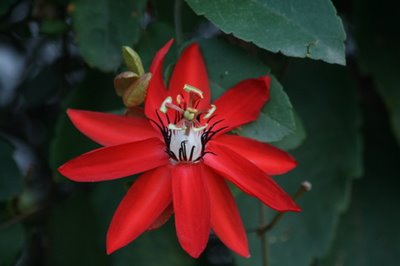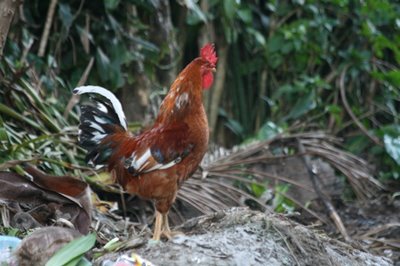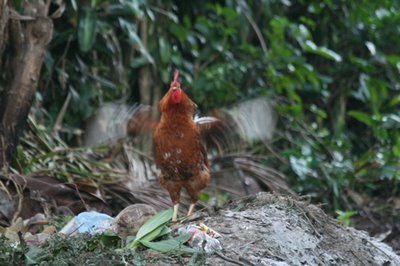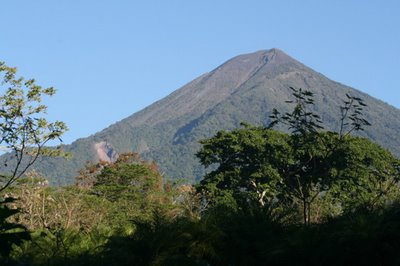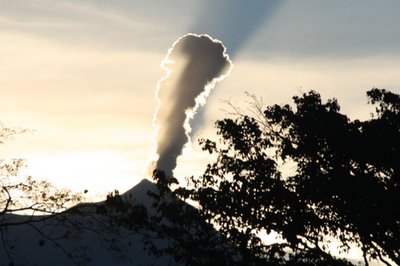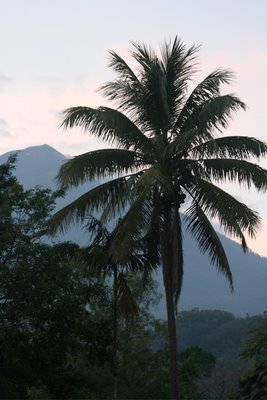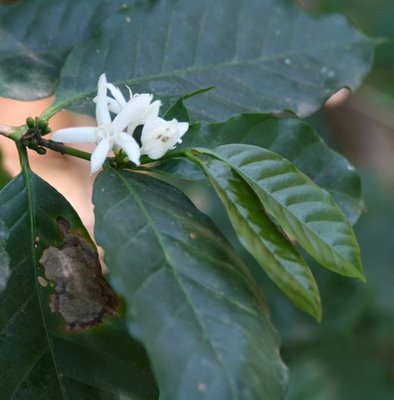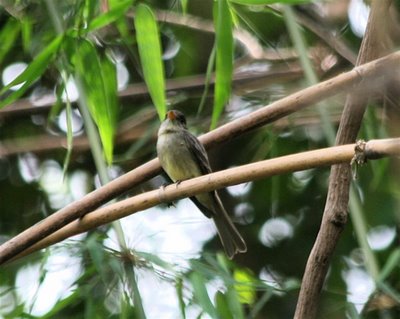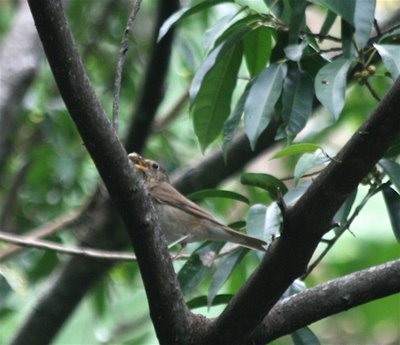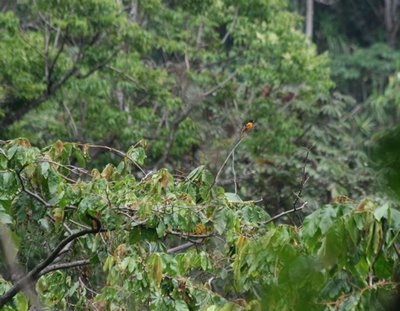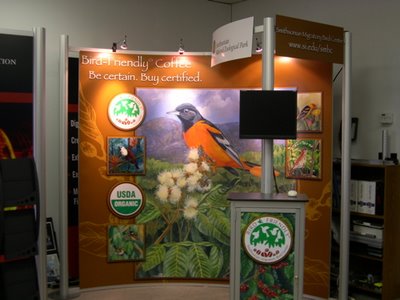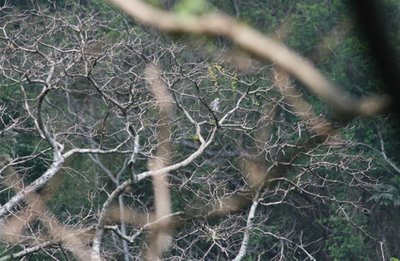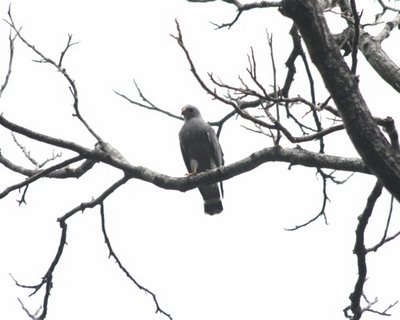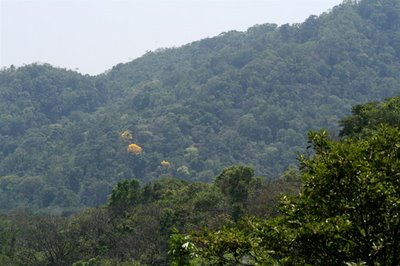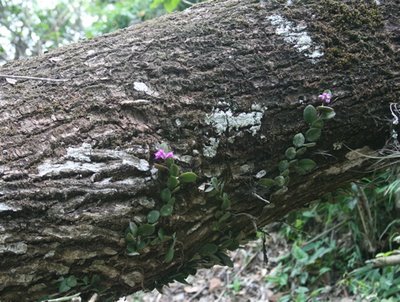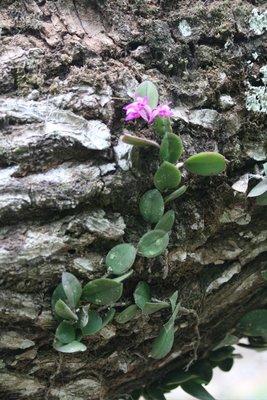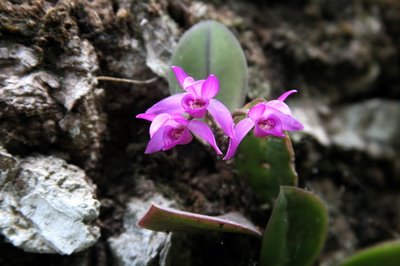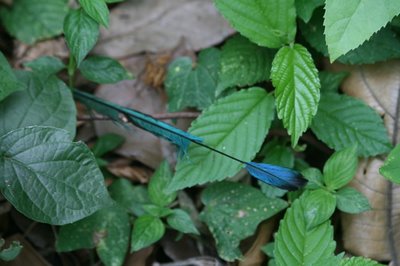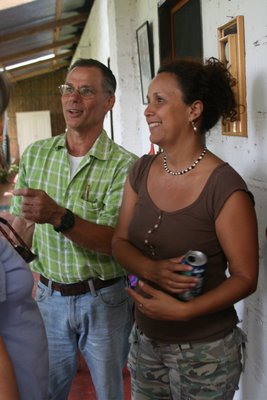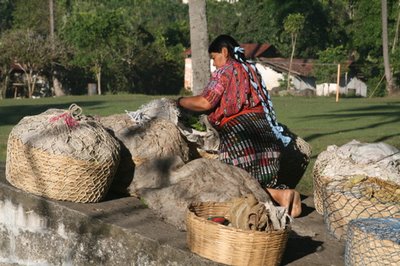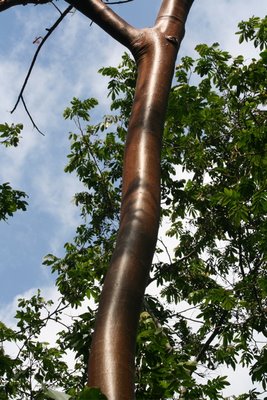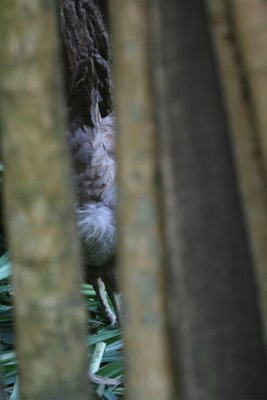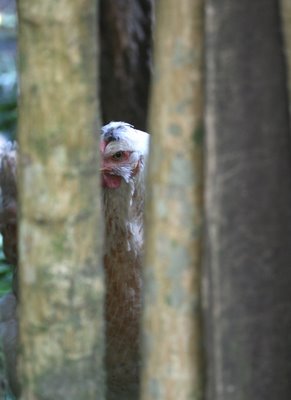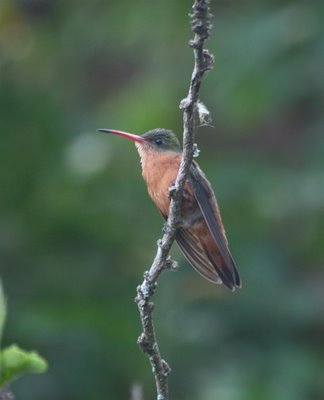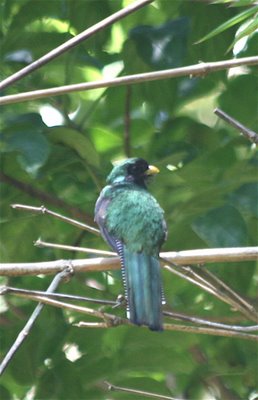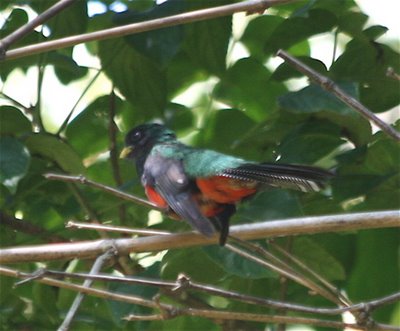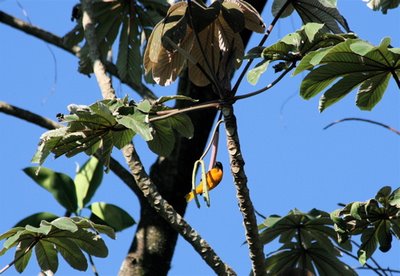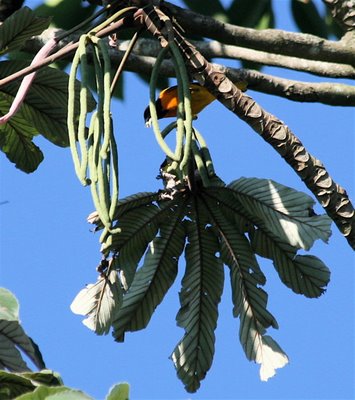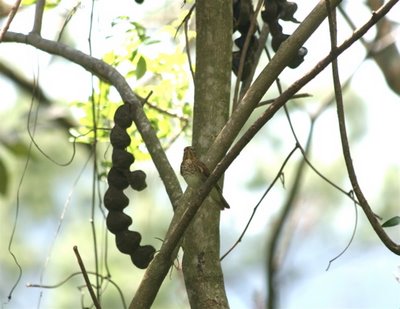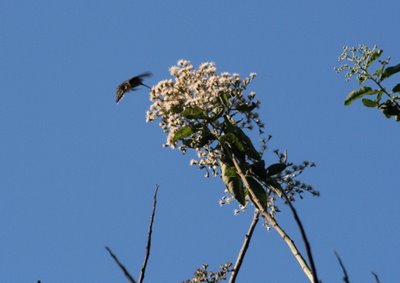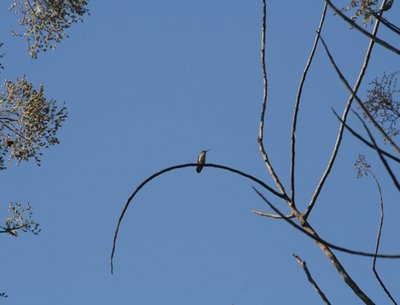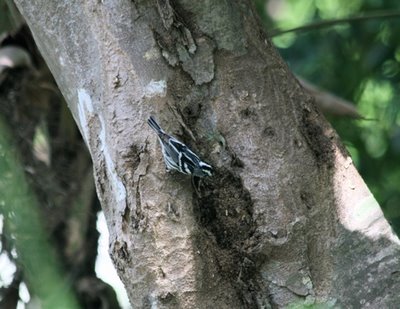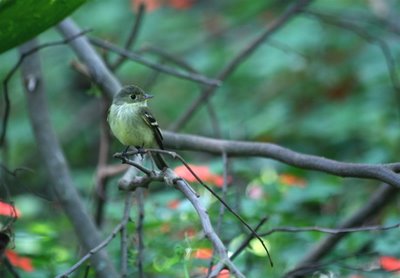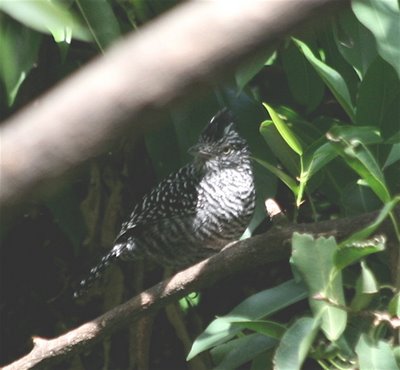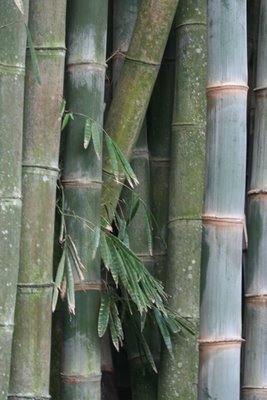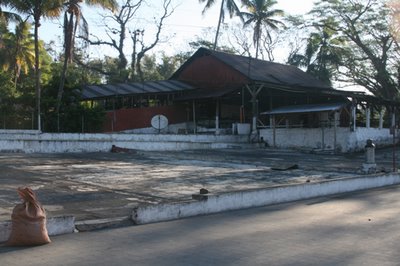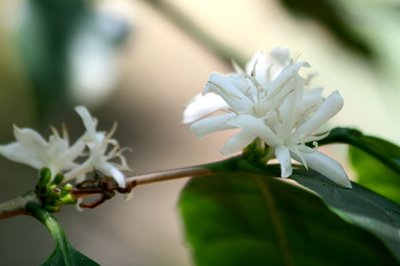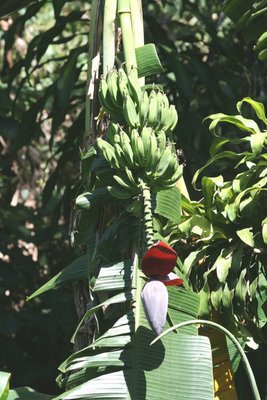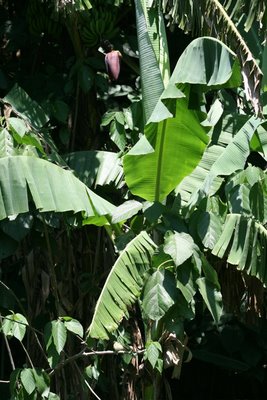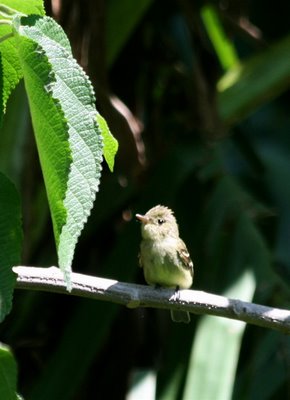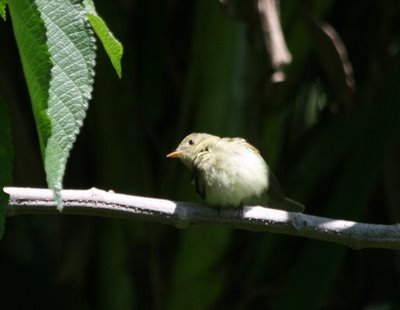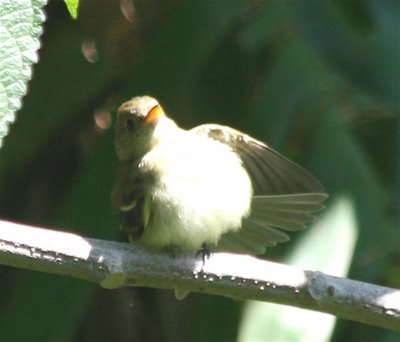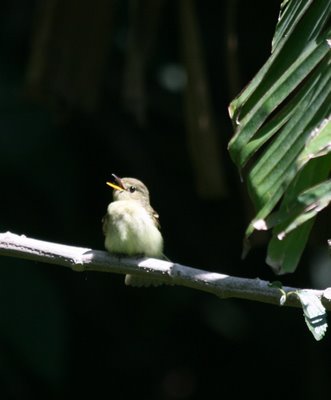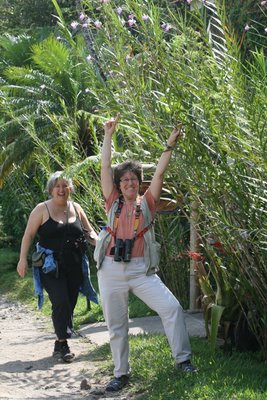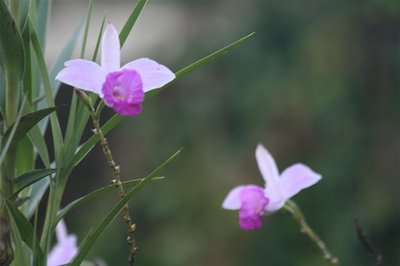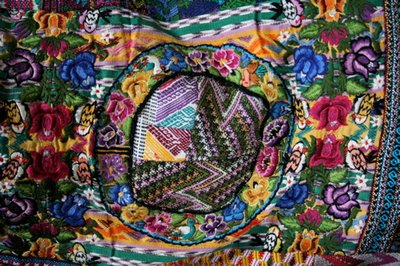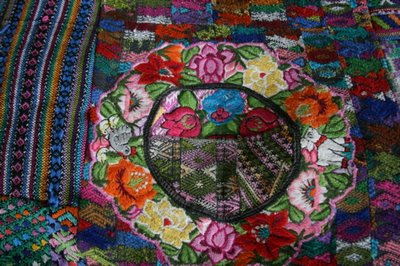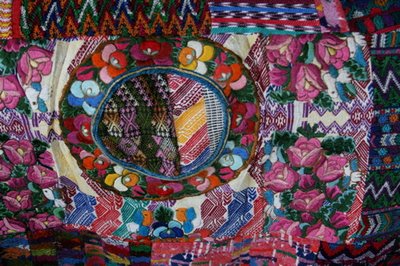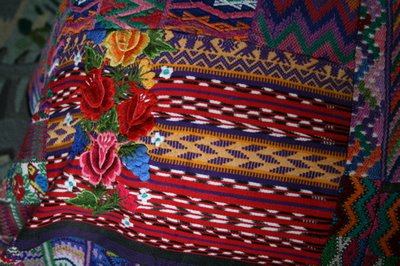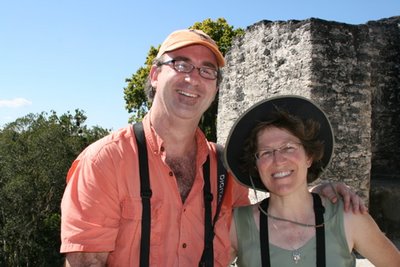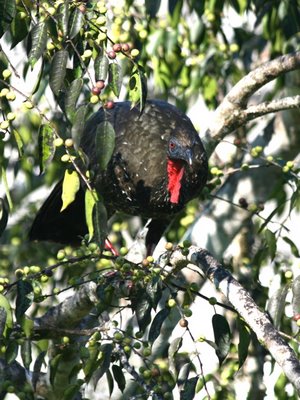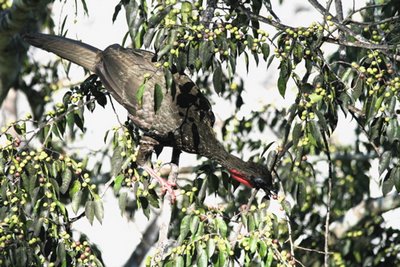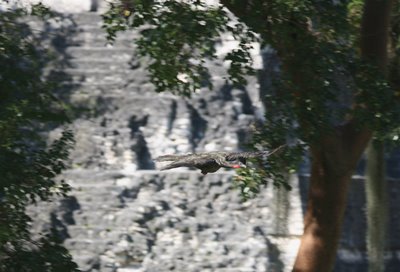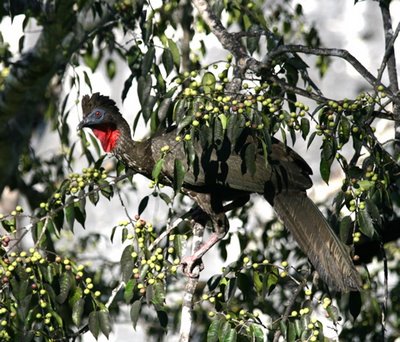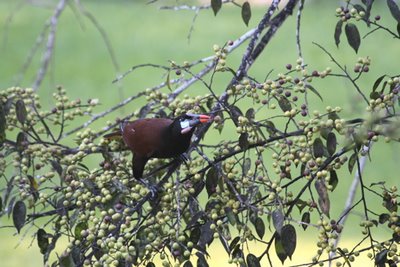From a Balcony in Guatemala
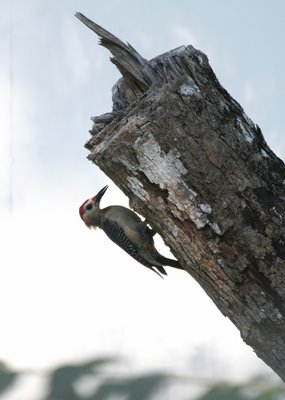 Through the haze of discomfort, it quickly became apparent that my balcony on the third floor of a detached hotel was quite the hotspot for birds. Of course, the same principle applies here as applies at home. Indigo Hill, as we call our 80-acre sanctuary, is really nothing special as far as Ohio mesic woodlands go. It's our close attention to it that makes it seem so abundant and miraculous. Which any piece of land, closely observed, can be. Here follow the observations and photographs I made while recuperating.
Through the haze of discomfort, it quickly became apparent that my balcony on the third floor of a detached hotel was quite the hotspot for birds. Of course, the same principle applies here as applies at home. Indigo Hill, as we call our 80-acre sanctuary, is really nothing special as far as Ohio mesic woodlands go. It's our close attention to it that makes it seem so abundant and miraculous. Which any piece of land, closely observed, can be. Here follow the observations and photographs I made while recuperating.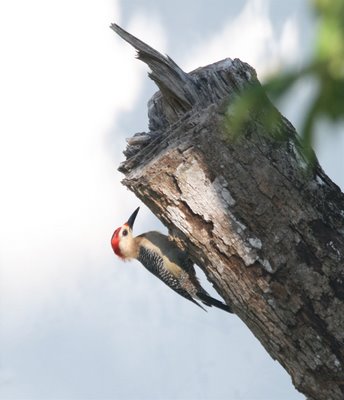
Repeated soft tapping from a branch stub that had been cut off to accommodate the hotel construction gave away the new nest cavity of a pair of golden-fronted woodpeckers. Yes, I know, they don't have golden fronts like ours do in the American southwest, and the scuttlebutt in the birding community is that this is probably a discrete species, perhaps to be called the Guatemalan woodpecker. An endemic in the making. I say that with a bit of irony. The woodpecker knows what it is. It's we who are trying to decide whether it's a big deal for our lifelists or not.
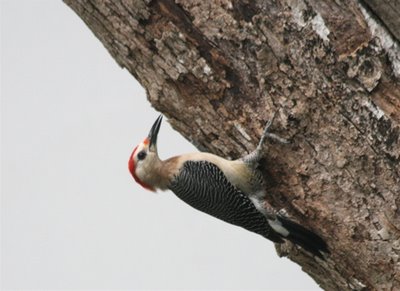
Knock yourselves out. I'll just keep digging our nest cavity, thanks.
A larger relative: the lineated woodpecker, Dryocopus lineatus. Smaller than our pileated, it's a bit more ornate, too, with barred underparts and cool facial markings.
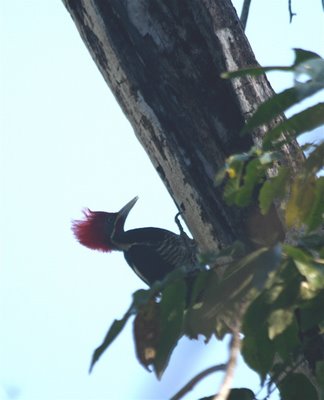 The lineated woodpecker was interested in a cavity in a rotten snag just a few yards from the golden-fronted's home. But that snag was hot property, as I was to find out, and the lineated woodpecker didn't have a chance against the current owners. They weren't taking offers.
The lineated woodpecker was interested in a cavity in a rotten snag just a few yards from the golden-fronted's home. But that snag was hot property, as I was to find out, and the lineated woodpecker didn't have a chance against the current owners. They weren't taking offers.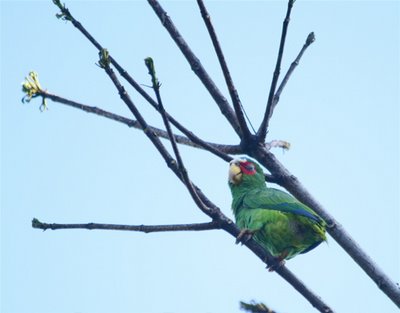 Nope. We've taken it back off the market. You'll have to excavate your own.
Nope. We've taken it back off the market. You'll have to excavate your own.A white-fronted Amazon, the smallest of the Amazon parrots, and arguably the cutest. In the pet trade, they're sometimes called spectacled Amazons, but their Latin name (ever the most reliable) is Amazona albifrons. I've seen these little birds kept as pets, but I've never seen one look happier than the pair incubating their eggs just 15' off my balcony.
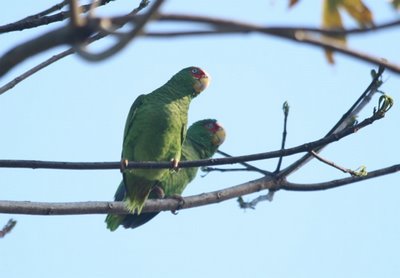 The female's in front. Can you tell what makes her the female? She's worn her tail off in the tight nesting cavity, incubating her eggs! I was thrilled when, the first time I could observe them at length, the tailless one I'd picked as the hen disappeared back into the nest cavity, while the perfect-tailed male took off yelling. (I'd add here that they were not the least bit visibly concerned about my sitting on the balcony. They were relaxed, preening, talking between themselves, and just being parrots).
The female's in front. Can you tell what makes her the female? She's worn her tail off in the tight nesting cavity, incubating her eggs! I was thrilled when, the first time I could observe them at length, the tailless one I'd picked as the hen disappeared back into the nest cavity, while the perfect-tailed male took off yelling. (I'd add here that they were not the least bit visibly concerned about my sitting on the balcony. They were relaxed, preening, talking between themselves, and just being parrots).Each morning, they'd both sit outside the cavity and scream, AK AK AK AK AK AK AK AK AK AK AK!! They'd preen a bit and scream some more and then one bird would quietly crawl back into the cavity and the other would take off, screaming AK AK AK AK AK AK AK AK AK as it arrowed into the distance over the lagoon. Wild parrots scream a lot, even when they're paired and incubating and conceivably self-actualizing to the hilt. I always smirk when I read bird behavioralists proclaiming that pet parrots are screaming "because they're lonely, bored, in need of attention..." Well, yes, all that might be true, because unless he's glued to your cheek, a captive parrot is de facto lonely, bored and in need of attention; but happy beautiful wild parrots scream all the time, even when they're in a flock of 30. Screaming is part of what parrots do. Ergo: Parrots are noisy pets. Apologies to Charlie, who doesn't scream much at all, but does it enough (say twice a day AGGGHAGGGH HAGGGHAHHAG AGGHAGH GGHAGGGH...until we close his sliding glass door)...to drive anybody crazy.
In better light the next morning, the male parrot amused himself by clipping branches
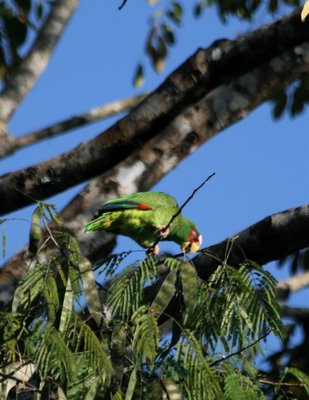 watching me
watching me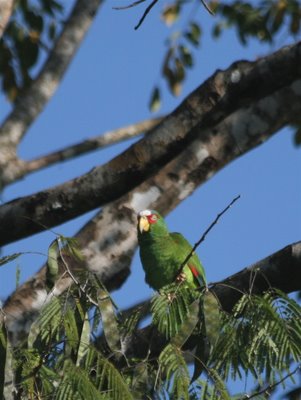 preening, stretching and dozing
preening, stretching and dozing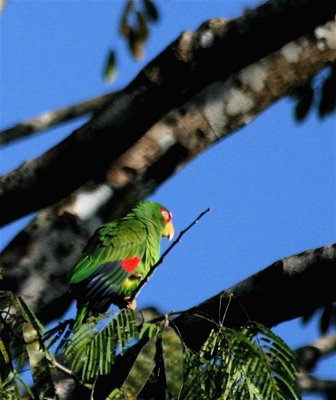 --such lovely red primary coverts!!! Such lovely indigo primary feathers--feathers we parrotkeepers are instructed to clip off as soon as they grow in, so the parrot never gets to use them. Yes, I am having a mid-life avicultural crisis, in case you hadn't noticed.
--such lovely red primary coverts!!! Such lovely indigo primary feathers--feathers we parrotkeepers are instructed to clip off as soon as they grow in, so the parrot never gets to use them. Yes, I am having a mid-life avicultural crisis, in case you hadn't noticed.Eventually he'd take off, you guessed it, screaming all the way.
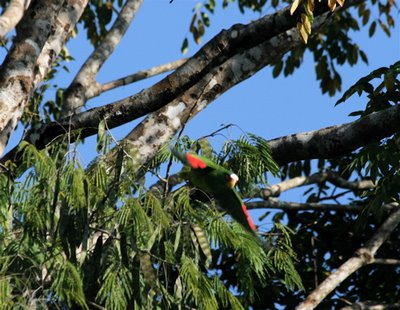 Flying, the way all parrots should. Screaming, the way all parrots do.
Flying, the way all parrots should. Screaming, the way all parrots do.Both talks at the Cornell Lab of Ornithology went very well. Man, I've had sooo much fun up here in Ithaca. I hate to leave, but home calls, and the peas need to be planted in the beautiful new moon. Heading home Tuesday, Baker by my side. He keeps me awake by regularly fumigating the car interior.
Labels: birding with dysentery, golden-fronted woodpecker, Guatemala, nesting parrots, parrot screaming, screaming parrots, white-fronted Amazon parrots

